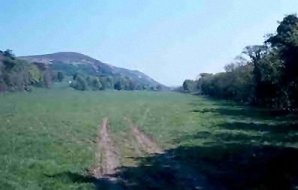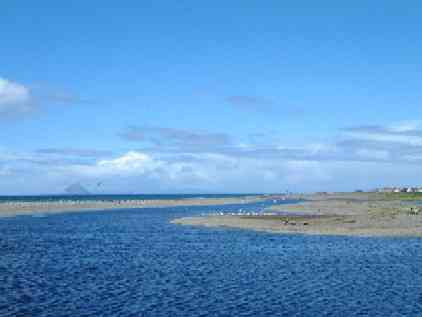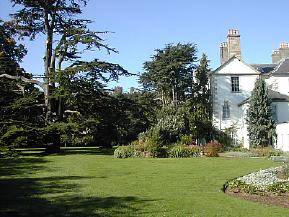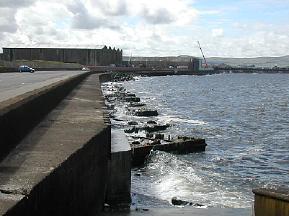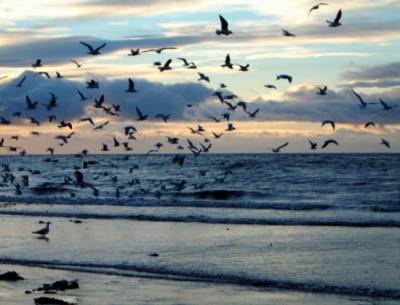Location and Access
![]() This Scottish Wildlife Trust woodland reserve lies on the west bank of the River Ayr starting at Failford. To get there follow the B743 from Mauchline or the Ayr bypass. Park opposite the Failford Inn at NS 460 262 (this makes a good finishing point – check out their web site). The reserve is reached by the sign-posted path heading towards the river from the west end of the village and is open all the time.
This Scottish Wildlife Trust woodland reserve lies on the west bank of the River Ayr starting at Failford. To get there follow the B743 from Mauchline or the Ayr bypass. Park opposite the Failford Inn at NS 460 262 (this makes a good finishing point – check out their web site). The reserve is reached by the sign-posted path heading towards the river from the west end of the village and is open all the time.
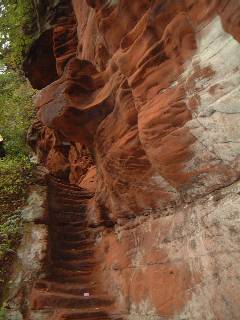 The River Ayr cuts through a sandstone gorge flanked by a rich deciduous and coniferous woodland. There are several paths going along the river and higher up through the wood giving circuitous walks of an hour or up to three. One interesting feature is Peden’s Pulpit: steps have been cut in the sandstone to a place where the Covenanter Alexander Peden preached to his congregation on the other side of the river (see picture). Robert Burns parted from Mary Campbell here “after plighting his troth” to her.The path gets a little hairy at this point and is not suitable for people with a poor head for heights (like the author!); however, it is possible to go up and around.
The River Ayr cuts through a sandstone gorge flanked by a rich deciduous and coniferous woodland. There are several paths going along the river and higher up through the wood giving circuitous walks of an hour or up to three. One interesting feature is Peden’s Pulpit: steps have been cut in the sandstone to a place where the Covenanter Alexander Peden preached to his congregation on the other side of the river (see picture). Robert Burns parted from Mary Campbell here “after plighting his troth” to her.The path gets a little hairy at this point and is not suitable for people with a poor head for heights (like the author!); however, it is possible to go up and around.
Update on October 2003
SWT have done extensive work (funded by a lottery grant) upgrading the paths and drainage in the reserve and clearing back the vegetation beside the path. This makes it less muddy underfoot, however, it still isn’t suitable for wheelchair users. The section of the path at Peden’s Pulpit is now so eroded that access is extremely dangerous and should not be attempted.
![]() Rough woodland tracks not suited for wheelchair users.
Rough woodland tracks not suited for wheelchair users.
![]() Busy road, care needed.
Busy road, care needed.
Birds
Obviously, the reserve is particularly good for woodland and river species. These include Jay, Buzzard, Dipper, Grey Wagtail, flycatchers, Great Spotted Woodpecker, Heron, Goosander, Treecreeper, warblers. In the spring the woodland can be extremely noisy! Osprey have been seen on passage.
The SWT have done a good job in maintaining the reserve and the paths are clear and go through a variety of good habitat. It is a surprisingly quiet place given just how attractive the area is. Given the relative scarcity of woodland in Ayrshire, this reserve is an absolute gem.




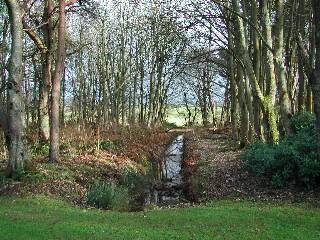
 Disabled parking spaces at back left corner of car park. The perimeter path around the north sector, despite being rough and muddy at times, should be negotiable by wheelchair with care. The eastern sector is only accessible by wheelchair from the (sometimes busy) unclassified road passing the stable block. The rough tracks criss-crossing the woods are best avoided.
Disabled parking spaces at back left corner of car park. The perimeter path around the north sector, despite being rough and muddy at times, should be negotiable by wheelchair with care. The eastern sector is only accessible by wheelchair from the (sometimes busy) unclassified road passing the stable block. The rough tracks criss-crossing the woods are best avoided.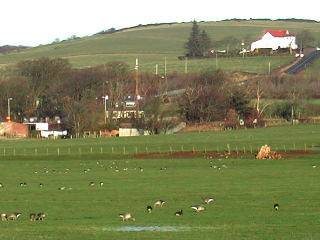
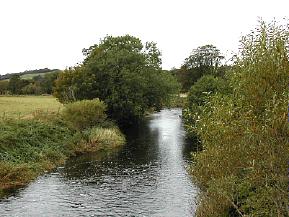
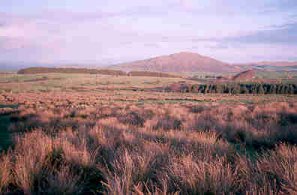
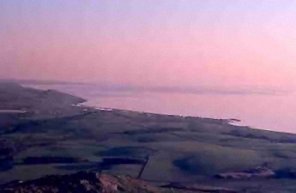 The real value of Knockdolian lies in its breeding bird community. Mature oak woodland is a scarce commodity in Ayrshire and the range of species breeding here is typical of such habitats. Early spring migrants such as Chiffchaff and Willow Warbler often occur here well ahead of their arrival elsewhere in the county. However, May is probably the best time to hear the songs of breeding species like Tree Pipit, Redstart, Wood Warbler and Pied Flycatcher. The river valley also holds wealth of birdlife with both Red-breasted Merganser and Goosander occasionally nesting alongside regulars such as Common Sandpiper, Grey Wagtail, Dipper and sometimes Kingfisher. The following species could be expected depending on the time of year: Grey Heron, Mallard, Buzzard, Sparrowhawk, Kestrel Pheasant, Oystercatcher, Common Sandpiper, Woodpigeon, Cuckoo, Great Spotted Woodpecker, Skylark, Meadow Pipit, Tree Pipit, Sand Martin, Swallow, House Martin, Wren, Dunnock, Robin, Redstart, Redwing, Blackbird, Fieldfare, Song Thrush, Mistle Thrush, Whitethroat, Garden Warbler, Blackcap, Wood Warbler,Chiffchaff, Willow Warbler, Spotted Flycatcher, Pied Flycatcher, Long-tailed Tit, Coal Tit, Blue Tit, Great Tit, Treecreeper, Jay, Jackdaw, Rook, Carrion Crow, Raven, Starling, Chaffinch, Greenfinch Goldfinch, Siskin, Linnet, Bullfinch, Yellowhammer. Scarcer species such as Osprey, Green Woodpecker and Waxwing have also occurred.
The real value of Knockdolian lies in its breeding bird community. Mature oak woodland is a scarce commodity in Ayrshire and the range of species breeding here is typical of such habitats. Early spring migrants such as Chiffchaff and Willow Warbler often occur here well ahead of their arrival elsewhere in the county. However, May is probably the best time to hear the songs of breeding species like Tree Pipit, Redstart, Wood Warbler and Pied Flycatcher. The river valley also holds wealth of birdlife with both Red-breasted Merganser and Goosander occasionally nesting alongside regulars such as Common Sandpiper, Grey Wagtail, Dipper and sometimes Kingfisher. The following species could be expected depending on the time of year: Grey Heron, Mallard, Buzzard, Sparrowhawk, Kestrel Pheasant, Oystercatcher, Common Sandpiper, Woodpigeon, Cuckoo, Great Spotted Woodpecker, Skylark, Meadow Pipit, Tree Pipit, Sand Martin, Swallow, House Martin, Wren, Dunnock, Robin, Redstart, Redwing, Blackbird, Fieldfare, Song Thrush, Mistle Thrush, Whitethroat, Garden Warbler, Blackcap, Wood Warbler,Chiffchaff, Willow Warbler, Spotted Flycatcher, Pied Flycatcher, Long-tailed Tit, Coal Tit, Blue Tit, Great Tit, Treecreeper, Jay, Jackdaw, Rook, Carrion Crow, Raven, Starling, Chaffinch, Greenfinch Goldfinch, Siskin, Linnet, Bullfinch, Yellowhammer. Scarcer species such as Osprey, Green Woodpecker and Waxwing have also occurred.